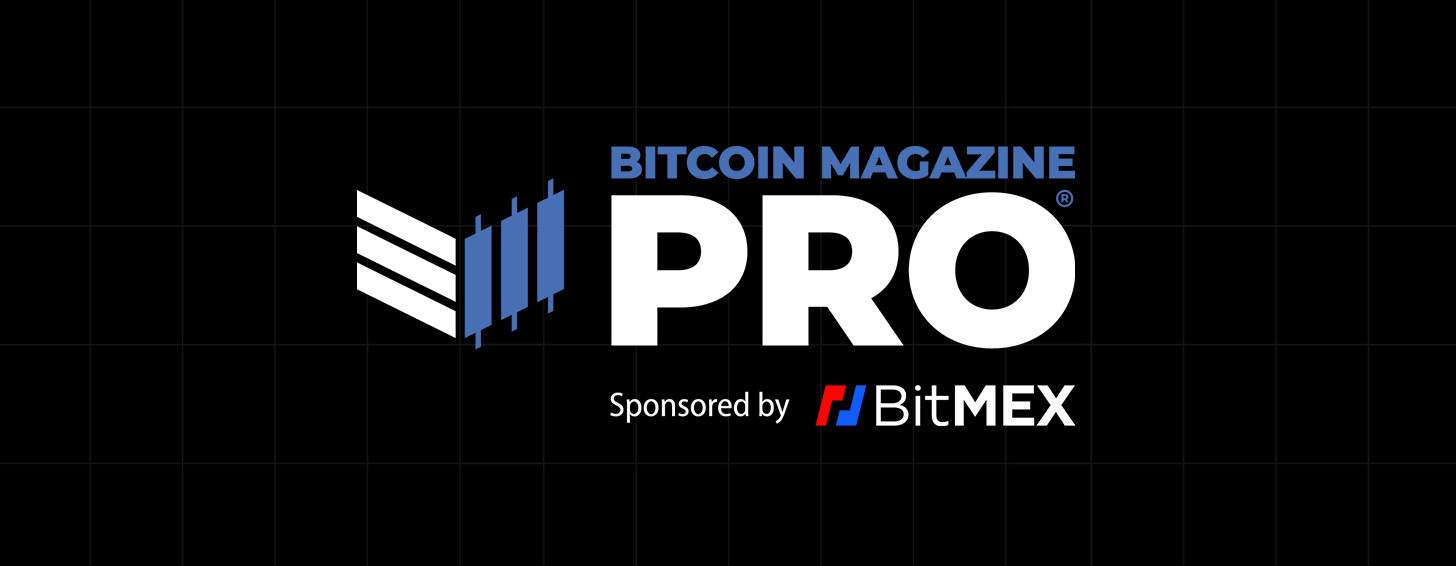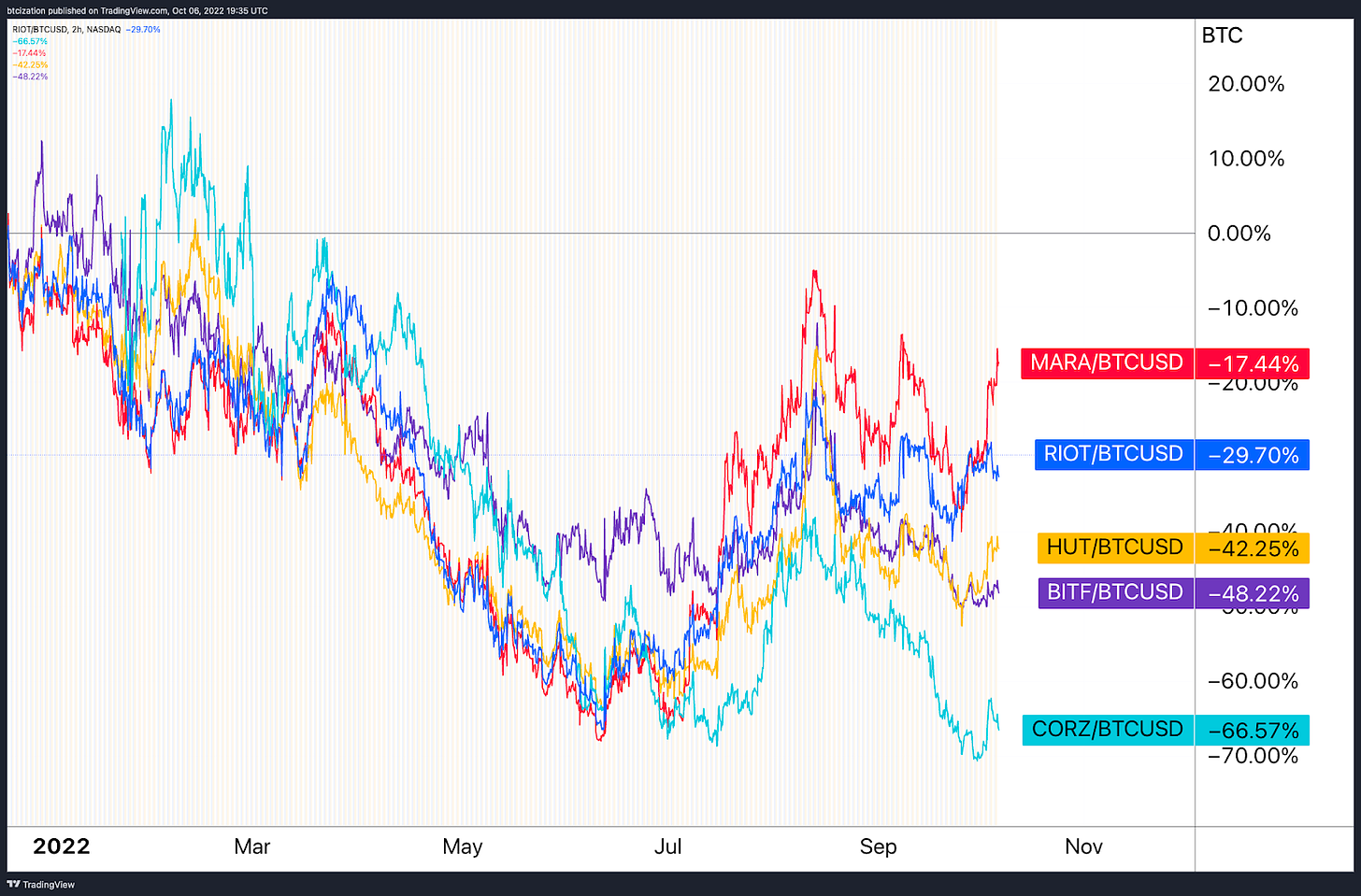Hash Rate Hits New All-Time High: Implications For Mining Equities
Bitcoin’s hash rate endured a series of significant price drawdowns, yet emerged higher than before. We review the recent explosion in hash rate and look at potential implications for the industry.
Relevant Past Articles
New Hash Rate All-Time High
Just two months ago, the 2022 expansion in Bitcoin hash rate was looking bleak. The bitcoin price had plummeted, miner margins were getting compressed, large public miners were shedding bitcoin holdings and it was a ripe time to revisit the state of miner capitulation in the market. Fast forward to today: price has come down from a massive bear market rally to $25,000 while hash rate coming online has exploded to a new all-time of nearly 250 EH/s. The chop and range and rallies in bitcoin price haven’t impacted the hash rate from ripping higher this year. Hash rate hasn’t really declined on a 30-day growth basis since July.
One of the biggest drivers of the expansion is the follow through from large public miners who already planned out and capitalized plans to bring substantial hash rate online last year. We noted in a public miner piece from October 2021:
As it stands from public miner reporting, the top eight public mining companies currently control 10% of all the network hash rate, currently around 15.19 EH/s. But the kicker is that they are only just getting started. As an overall group, they have published plans and goals to grow their hash rate by 267% from now through 2022, which would bring their total collective hash rate to 55.82 EH/s. Both Marathon Digital Holdings and Core Scientific, the two largest North American miners, will account for nearly half of this growth, both planning to 5x their current hash rate.
Looking back at this data and measuring where public miners are today, most of this expansion has gone on as planned. Core Scientific hit their initial projected hash target to 13.0 EH/s already along with Hut 8 to 3.0 EH/s. Other miners like Marathon haven’t hit their goals yet but have announced expectations for 6.9 EH/s additional hash rate to come online in the next 60 days and expectations that 23 EH/s will be hit in the middle of 2023. Bitfarms just hit a hash rate of 4.2 EH/s up from 1.53 EH/s and Riot has actually raised their goal to 12.5 EH/s by Q1 2023.
Chart from our 10/22/21 - Public Miner Analysis
That’s some of the best public data available to chalk up why bitcoin hash rate has exploded so much. It’s public miners executing on expansion plans. But that doesn’t mean large-scale mining companies haven’t faced additional pressures. Compute North, one of the largest data center operators and bitcoin mining hosting services, filed for Chapter 11 bankruptcy just weeks ago. They housed miners for companies like Marathon Digital, Compass Mining and Bit Digital across 84 different mining entities. A major auction on the bulk of Compute North existing assets will take place on November 1, 2022 including mining containers, machines and entire data centers.
In the Celsius collapse, Celsius Mining also filed for bankruptcy back in July. That said, it’s clear from the recent Compute North’s bankruptcy that the pressure is still on large-scale miners.
They aren’t out of the woods yet and we’ve been hesitant to call for an end of miner capitulation this cycle as price has stagnated and hash price (miner revenue divided by hash rate) continues to face some strong headwinds with this level of hash rate expansion playing out.
After making a new all-time high, mining difficulty saw a decent sized negative adjustment of 2.14% right before this explosion in hash rate over the last week. But that looks to be all short-term relief because as of now, the next projected difficulty adjustment is looking like a vicious 13.5% positive adjustment at the time of writing. We haven’t seen that level of adjustment since right after the Chinese mining ban. That type of adjustment would be bad news for existing miner profitability as hash price would come under further pressure.
Source: https://www.bitrawr.com/difficulty-estimator
As hash rate continues to rise while bitcoin consolidates around $20,000, hash price, which standardizes miner revenue against hash rate, is nearing all-time low levels. Shown below are the all time charts of hash price (Miner Revenue per TeraHash) and daily miner revenue, denominated in USD and BTC.
The major noticeable difference between the two charts is that miner revenue in bitcoin terms is programmatically decreasing as new issuance trends towards zero with each subsequent halving.
In bitcoin denominated terms, hash price is simply a staircase downwards as each upwards difficulty and quadrennial halving event decreases relative miner revenue. For some context, here is how brutally competitive the bitcoin mining landscape is: shown below is bitcoin-denominated miner revenue, hash price (Miner Revenue per TeraHash) and mining difficulty since 2016, all in linear scale.
In bitcoin terms, your revenue has not only been severely diminished with two halvings, but if you didn’t grow your effective hash rate for your operation by a factor of 300, you lost relative market share to other operations. Brutal.
It takes incredible operational excellence to continue to excel in the bitcoin mining industry over multiple cycles.
This is why bitcoin mining-related equity investing can be either extremely lucrative (if you choose one of the winners) or downright disastrous.
In our December 21 piece last winter, we said the following,
“What you should gather from evaluating the performance of publicly-traded miners against bitcoin itself is that due to the capital structure of their business and the valuations present in equity markets, miners can and likely will outperform bitcoin over periods when hash price rises significantly.
However, over the long term the revenue in bitcoin terms for every mining company is guaranteed to decrease in bitcoin terms, and due to the excessively large earnings multiples that companies currently trade with in equities markets in a zero interest rate world, even bitcoin mining equities trend to zero over time in bitcoin terms (once again, due to the equity multiples assigned in a zero interest rate fiat-denominated world).”
Since that point, the share prices of publicly traded mining companies are all down significantly when measured against bitcoin itself.
This should come as no surprise, given that hash price has decreased by 69.4% in the same period. Miner margins are getting relentlessly squeezed as earnings decrease, in both bitcoin and dollar terms.
Since the all-time high in the bitcoin price, every publicly traded mining company has underperformed the asset itself, bar none.
Thank you for reading Bitcoin Magazine Pro, we sincerely appreciate your support! Please consider leaving a like and letting us know your thoughts in the comments section. As well, sharing goes a long way toward helping us reach a wider audience!
















I suppose the only solution for miners to be profitable is massive consolidation in the industry. But then the risk of centralization emerges. How will bitcoin stay decentralized and profitable for miners at the same time? This issue has confounded me for quite some time. Please help explain a reasonable solution...